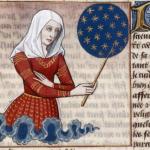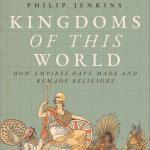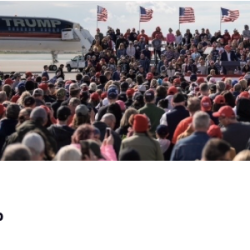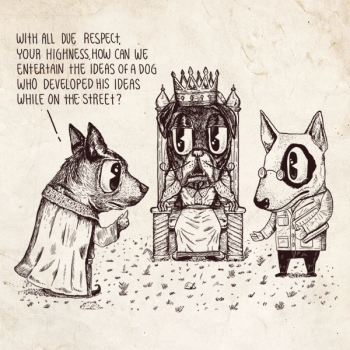This is the second in a series of posts by Lisa Weaver Swartz, an assistant professor of sociology at Asbury University. It explores gendered patterns in the stories humanitarian organizations tell donors and potential donors through online content. These posts are derived from a much larger project exploring the movement’s history and complexities. You can read more in Part I. –David
***
Women might hold the spotlight in humanitarian rescue narratives, but men also play important—often crucial—roles. Like the scripts women fill as the Victims and the Rescued, the stories’ masculine roles very often conform to one of two highly predictable shapes: The Good Men and the Bad Men. Also like their feminine counterparts, these scripts mirror the gendered assumptions of a particular context—not Southeast Asia, but American evangelicalism.
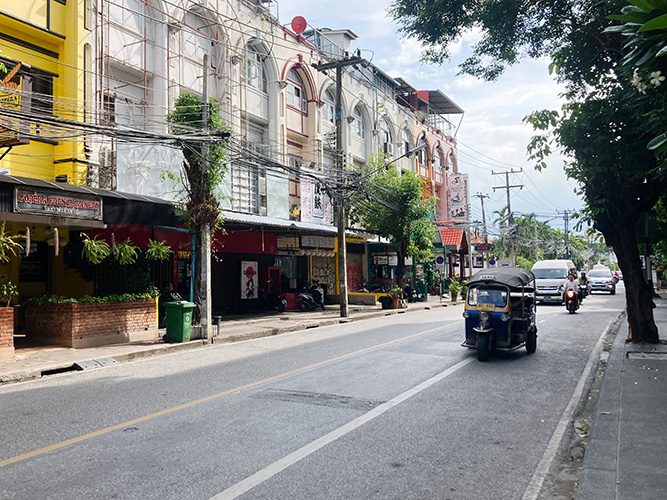 The first kind of men, the Bad Men, remain largely hidden. The audience is not meant to understand them, only to be alarmed by their presence. One video, posted by a high-profile anti-trafficking organization, tells “Sophia’s” story. “Sophia,” the audience learns, was “sold by a relative and sent into sex slavery.” The story quickly moves on to recount the journey of what the video calls her “transformation process” in detail, including Sophia herself explaining her experience of learning about God from the organization. In the middle of this journey, when, according to the organization’s founder who narrates the video, Sophia returned home to her village prematurely, she “was trafficked again.” These two brief mentions give little sense of what trafficking itself looks like—including the processes and vulnerabilities that facilitate it. The audience knows only that it happens at the hands of often-faceless Bad Men who remain largely out of sight. Mystery and anonymity underscore the threat they pose to justice.
The first kind of men, the Bad Men, remain largely hidden. The audience is not meant to understand them, only to be alarmed by their presence. One video, posted by a high-profile anti-trafficking organization, tells “Sophia’s” story. “Sophia,” the audience learns, was “sold by a relative and sent into sex slavery.” The story quickly moves on to recount the journey of what the video calls her “transformation process” in detail, including Sophia herself explaining her experience of learning about God from the organization. In the middle of this journey, when, according to the organization’s founder who narrates the video, Sophia returned home to her village prematurely, she “was trafficked again.” These two brief mentions give little sense of what trafficking itself looks like—including the processes and vulnerabilities that facilitate it. The audience knows only that it happens at the hands of often-faceless Bad Men who remain largely out of sight. Mystery and anonymity underscore the threat they pose to justice.
Another video deviates from this subtlety to include video footage of a raid. In a few dramatic seconds, viewers watch police officers outfitted with Kevlar and firearms, preparing to face what they clearly expect to be a formidable enemy. The segment ends with a dramatic arrest. This Bad Man, his face turned away from the camera, is forced to the ground and handcuffed. The voiceover narration explains, “After we rescue the victims, we want to arrest the perpetrators, in order to stop further human trafficking.”
The “we” in this story is, of course, the Good Men. While details about Bad Men are generally left to the imagination, readers know exactly what Good Men look like. Organizations provide embodied, and highly visible, examples. All five of the organizations whose websites I tracked were founded by white westerners whose stories form hero narratives that have most consistently propelled their work. These narratives thread their way through each organization’s web archives, and three of the contemporary sites feature highly produced videos, profiling the organizations’ origins or, in one case, describing the work of rescue. The founders’ faces and voices feature prominently in each.
In one of these videos, a veteran of the anti-trafficking movement recalls his initial steps to begin working in Southeast Asia. After acknowledging that he lacked the background and skills that the anti-trafficking movement needed, he remembers being told by one advisor to “go home and send money but don’t come back.” Sitting beside him as he shares this story on the recording, his wife giggles gleefully at the memory, enjoying the irony that such a powerful organization had resulted from her husbands’ choice not to heed this advice. Another video, which runs a lengthy 22 minutes, begins with its organization’s founder, an American with a thick beard and intensity in his voice as he explains the urgency he felt when discovering “in broad daylight this is happening! This isn’t hidden. . . How do we fight that?” His wife too speaks into the story, recalling her initial resistance to leaving her life as a suburban “stay at home mom” in the U.S. At first, she said, “I really did not want to go.” But he persisted, and the family moved across the world, a move which eventually resulted in the birth of their organization. These are clearly the Good Man, assertive leaders who take initiative and get things done in the face of opposition. They have resisted passivity and instead have eagerly engaged in the fight against injustice.
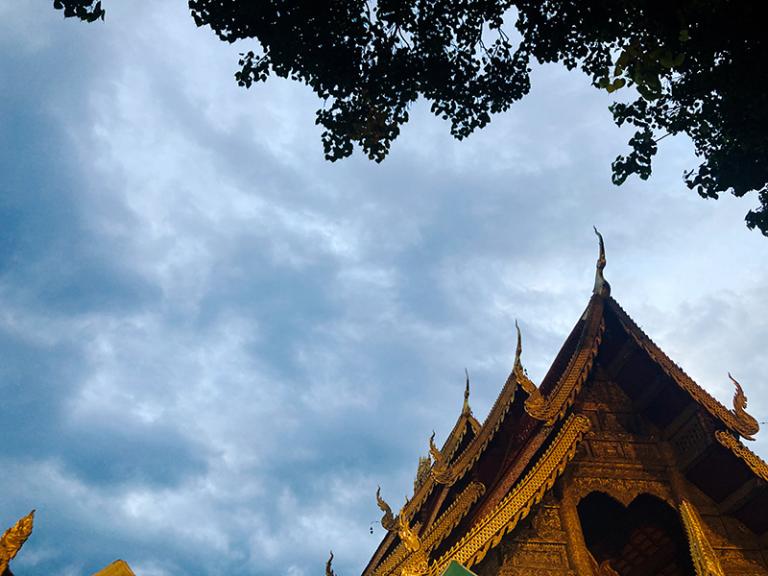 The “fight” language is also significant. All five organizations’ websites have, at times, included aggressive language and militarized imagery to promote their work. The 2023 version of one includes a page entitled “Our Fight.” The newsletter from the same organization makes it clear that they are in the fight to win. “Our goal is to defeat child sex trafficking,” it reads. “We will fight until we’re victorious,” says the founder, “We need as many soldiers as we can get.” Sometimes organizations borrow language and tactics directly from the U.S. military and law enforcement. One describes “search and rescue” missions, “front-line investigators,” and “deployment” of “ALPHA Teams” (made up of Thai nationals), and a “DELTA Teams” (of “Western deployed operatives).” Another website includes video images of the organization’s own SWAT team using firearms, tactical police gear, and bodily force.
The “fight” language is also significant. All five organizations’ websites have, at times, included aggressive language and militarized imagery to promote their work. The 2023 version of one includes a page entitled “Our Fight.” The newsletter from the same organization makes it clear that they are in the fight to win. “Our goal is to defeat child sex trafficking,” it reads. “We will fight until we’re victorious,” says the founder, “We need as many soldiers as we can get.” Sometimes organizations borrow language and tactics directly from the U.S. military and law enforcement. One describes “search and rescue” missions, “front-line investigators,” and “deployment” of “ALPHA Teams” (made up of Thai nationals), and a “DELTA Teams” (of “Western deployed operatives).” Another website includes video images of the organization’s own SWAT team using firearms, tactical police gear, and bodily force.
But being a Good Man takes more than assertiveness and tactical gear. While Bad Men are motivated by dishonorable aims, Good Men’s passions are driven by compassion. On a webpage entitled “Our Story,” one founder writes of the “risk” and “cost” involved in saving the vulnerable. These are hard things, he acknowledges, but he smiles warmly up from the accompanying photo reassuring readers that men like him are also strong enough emotionally to bear those burdens. Indeed, the burdens themselves include “love.” Stories frequently narrate this love in terms of fatherly attachment. In a 2016 Impact Report, for example, a staff member at another organization writes of those he helps rescue, “It’s not a job or a hobby to me; they are [like] my own wife and children. I won’t give them up.”
***
Like femininity, portrayals of masculinity in humanitarian storytelling have also come under critical evaluation by a new generation of movement leaders. Particularly problematic, these critics say, are the stories’ not-so-subtle threads of white saviorism. Seasoned humanitarian activists across Thailand and Cambodia cringe at the implication that they, as Westerners, bring the tools of freedom and salvation. They have recognized, instead, the necessity of collaboration and cultural humility, often adopting postures of support for local organizations and efforts.
What few have said—at least not out loud—is that the Good Men script also conspicuously mirrors the hegemonic constructions of white masculinity that Kristin Kobes DuMez has explored in Jesus and John Wayne. Humanitarian stories depict their Good Men, like John Wayne himself, as brave and strong. They are willing to use violent force, when necessary, to defend the vulnerable against evil forces. Similarly, the words and images that construct rescue narratives on NGO websites have often reinforced expectations of strong white men exercising dominance over vulnerable women’s bodies, especially the bodies of Asian women. Their dominance, of course, has a salvific aim, motivated by compassion and justice—but even this orientation recapitulates American Christian scripts, mirroring the fusion of soft patriarchy with relational strength in Godly Manhood ideals.
***
Anti-trafficking rescue stories like the ones that I’ve evaluated for these posts reach millions of donors and potential donors every year. While, on the surface, the stories promise to educate their audience on the realities facing vulnerable people in faraway places like Cambodia and Thailand, the gendered cultural scripts they depict are heavily American, not Asian. Their portrayals of women as vulnerable, demure, and in need of salvific masculine agency noticeably mirror evangelical assumptions about women’s submission to male headship. The stories also reward their protagonists with familiar gifts: Rescued Women find healing and restoration in the same domestic roles of wife and mother that evangelical women are encouraged to seek. Likewise, the stories’ men—both Good and Bad versions—come across as bold, self-motivated leaders, driven by seemingly untamable passions, much as “wild at heart” tropes of evangelical “Godly Manhood” celebrate. By normalizing these roles in a different cultural context, the stories extend their authority, making it seem universal and natural, rather than cultural.
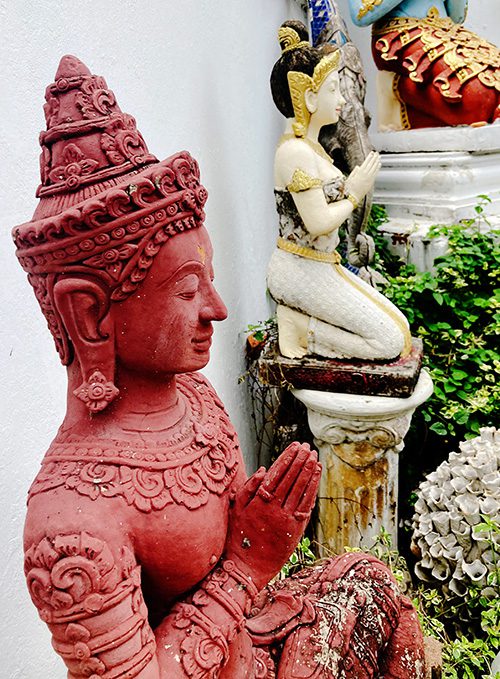 Interpretation of these patterns is, however, fraught with the complexities of cultural exchange. One could reasonably argue, for example, that the gendered tropes I have just attributed to American evangelicalism are also common in other cultural contexts. It is true that the domesticated, reserved femininity that humanitarian storytelling celebrates is especially suited to Southeast Asia. Nevertheless, one must also acknowledge gendered realities that the stories miss. For one thing, contrasting with the lack of women’s agency in most rescue stories, Thai and Khmer women are extremely entrepreneurial, particularly when faced with the realities of extreme poverty and the need to care for their families. The stories routinely celebrate women’s restoration to domestic roles as wives and mothers and to the work of nurture through hairstyling, sewing and jewelry making—all activities and roles that are familiar to American evangelical scripts. But Thai and Khmer women are not only wives, mothers, and hairdressers. They are also business owners, computer scientists, and legal experts. Even those stuck in poverty and low-wage occupations exercise creativity and personal drive.
Interpretation of these patterns is, however, fraught with the complexities of cultural exchange. One could reasonably argue, for example, that the gendered tropes I have just attributed to American evangelicalism are also common in other cultural contexts. It is true that the domesticated, reserved femininity that humanitarian storytelling celebrates is especially suited to Southeast Asia. Nevertheless, one must also acknowledge gendered realities that the stories miss. For one thing, contrasting with the lack of women’s agency in most rescue stories, Thai and Khmer women are extremely entrepreneurial, particularly when faced with the realities of extreme poverty and the need to care for their families. The stories routinely celebrate women’s restoration to domestic roles as wives and mothers and to the work of nurture through hairstyling, sewing and jewelry making—all activities and roles that are familiar to American evangelical scripts. But Thai and Khmer women are not only wives, mothers, and hairdressers. They are also business owners, computer scientists, and legal experts. Even those stuck in poverty and low-wage occupations exercise creativity and personal drive.
Whatever else might be true of the gendered portrayals in humanitarian rescue narratives, it seems worth noting that their patterns are conspicuously resonant with the very American evangelical Godly Manhood and Godly Womanhood scripts that many donors ascribe to. The stories that they frame may not be untrue, but they are certainly partial. Their details are carefully curated and translated for a particular audience. And, according to a new generation of movement leaders, they sometimes end up fueling fundraising goals at the expense of the very people the organizations exist to empower. Our book will tell the story of these new leaders’ efforts to promote more nuanced understandings of the problem of trafficking and more informed, sustainable, and culturally sensitive solutions.
Their efforts have been partially successful. All of the organizations I included in this analysis have made noticeable changes in their web content. One completely re-branded away from the Mission-Impossible theme of its early days, replacing images of chains and dark, foreboding hallways with a striking, brightly lit portrait of a young Thai woman. She is clearly not a Victim or a Rescued woman. She’s a confident, highly educated attorney who leads the organization’s prosecution team. Another website slowly reduced the amount of space given to the founder and his own story, highlighting instead themes of justice and the problem of global poverty.
And yet ethical storytelling advocates still face an uphill battle. Damaging narrative threads persist, they argue, even within organizations that have made substantial adjustments to their practices. The NGOs that produce these stories might not be inattentive to Asian cultures and contexts. And they might have very good intentions. But the patterns suggest that at least some American categories and assumptions remain dominant in the narratives that continue to drive the movement. The forces of globalization and American power continue to shape the cultures of Southeast Asia, through the efforts—and stories—of American Christianity.


